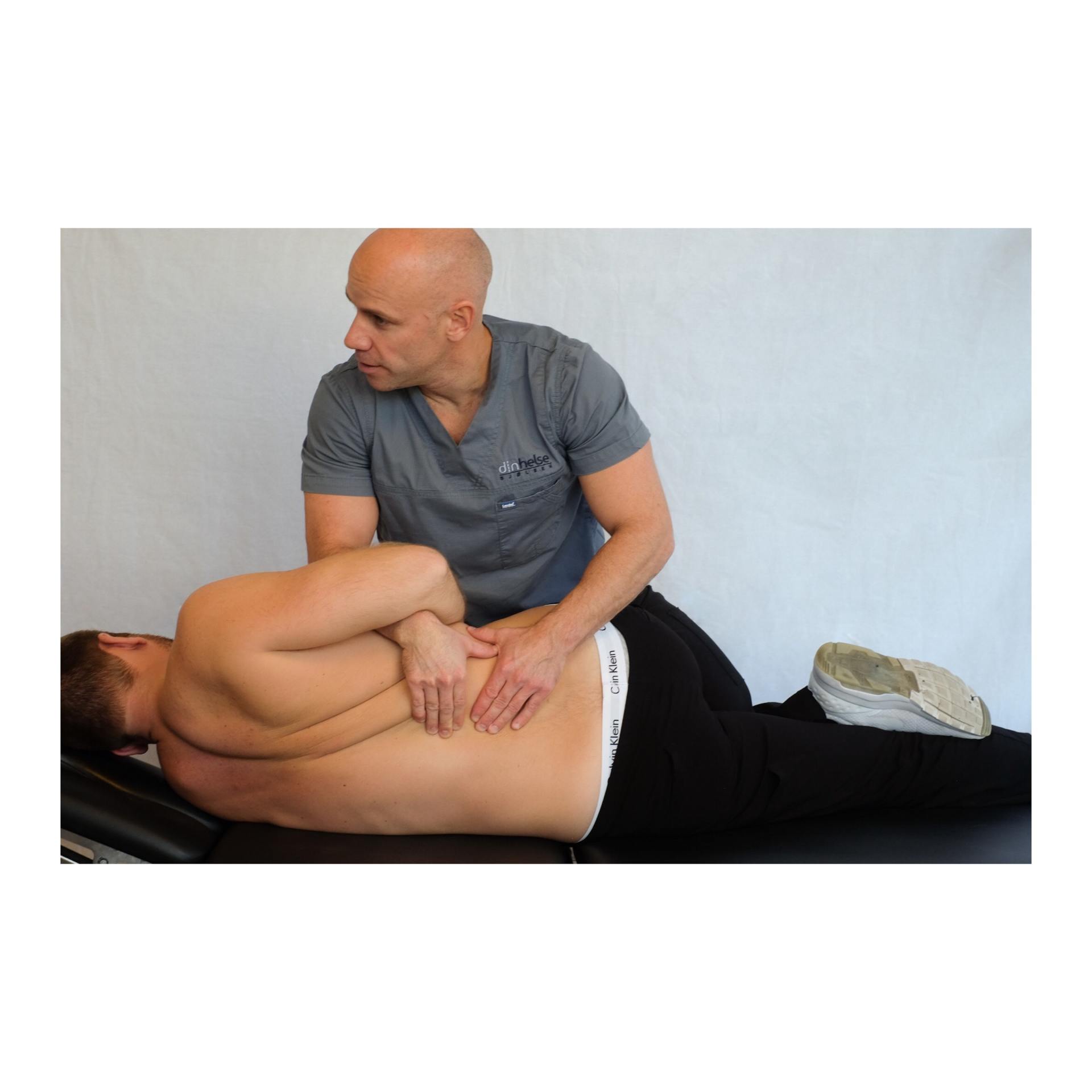The Hand, Arm & Shoulder Specialists
since 1986
Kleiser Therapy Blog

Redesign Your Work Area
Your employer probably knows about carpal tunnel, but he or she may forget to think about preventing it. If you develop carpal tunnel from your job, you might be able to collect workers’ compensation, or you might be able to sue your employer.
You may want to present a request to your boss asking to have your work station redesigned. You can explain that you do not want to develop this condition because it would impair your job performance and your life, and this might convince your boss to follow through with this.
When you redesign your work station, you must think in terms of ergonomics. Ergonomics is a common word used to describe office settings, and it refers to purchasing the right types of furniture and equipment to support the body’s needs. It also refers to setting up the furniture and equipment to meet a certain person’s individual needs.
This often involves:
- Placing the computer monitor at eye level
- Setting up the keyboard so that a person’s arms and wrists are in a natural, relaxed position
- Choosing a chair that offers the right type of back support
Take Frequent Breaks
An ergonomic work station will help you improve your posture, which is helpful for preventing carpal tunnel, but it is still important to take breaks often. Carpal tunnel develops when you overuse your wrists and hands, but if you take breaks often, you will give your hands time to rest and heal.
When you take a break, you should get up and walk around, and you should also exercise your hands. There are many types of easy exercises you can do, and any type that stretches your hands will help. One idea is to stand up and place your arms in front of you. As you do this, open and close your hands, and repeat several times.
By redesigning your desk and taking frequent breaks, you may lower your risks of developing carpal tunnel. If you are already experiencing symptoms of carpal tunnel, you should seek help from a doctor—such as one from Kleiser Therapy—soon to find out what treatment options are available.

Start Wearing a Wrist Splint
One of the best ways to combat carpal tunnel syndrome is to wear a wrist splint specifically designed for those with this condition. You see, most cases of carpal tunnel syndrome occur as a result of poor placement of the hands. For example, if you’re constantly typing on a computer with minimal wrist support, there’s a chance you’ll develop carpal tunnel as a result.
A wrist splint, then, helps to position the hand and wrist in a way that promotes circulation and reduces strain on the nerves of the hand. Depending on the severity of your carpal tunnel, you may need to wear the splint while you work or even overnight as you sleep.
Do Hand and Wrist Exercises
In addition to providing your wrists and hands with better support, you may also want to consider doing daily exercises that are intended to relieve some of the symptoms of carpal tunnel syndrome. There are a couple of exercises you can try.
For example, make a fist with your hands. Then, slowly open your hand and stretch all fingers outwards. Repeat this process 10 times. This can help to lessen the pressure on your hand’s median nerves while also promoting better circulation of blood.
Go on a Diet
If you’re overweight, this can also contribute to your carpal tunnel complications. You see, when you carry extra weight, you could be further compressing the median nerves in the wrists, which is a main trigger of carpal tunnel pain and discomfort. By reaching and maintaining a healthy weight, the nerves in your hands will be under less pressure. If you’re not sure if you’re at a healthy weight or if you want to start dieting and exercising to lose weight, be sure to speak with your doctor.
These are just a few small changes you can make to enjoy relief from your carpal tunnel symptoms while also preventing the condition from getting worse. Be sure to give some or all of these a try. Consider talking with a doctor or places like Kleiser Therapy for more tips.

Get Moving
Simply using your hands and wrists consistently, especially in the same repetitive motion, can aggravate carpal tunnel symptoms. When you’re feeling these symptoms, the Mayo Clinic website suggests that you take a break from those activities for a while, and move and stretch your wrists and hands.
Use Tools for Relief
WebMD recommends using a wrist splint while you sleep during the night to keep your wrist in a safe position and to take pressure off the nerve that causes pain in carpal tunnel syndrome, called the median nerve. Another option is to use an ice pack on your wrist when you’re experiencing symptoms. They also suggest applying ice one to two times per hour for 10 to 15 minutes each time.
Utilize Yoga
Some yoga techniques can help you stretch your fingers, hands, wrists and shoulders to relieve carpal tunnel. Certified Yoga Teacher Aimee Tanon recommends on MindBodyGreen that you perform the Cat-Cow Stretch and the Prayer Position. Here are the techniques to perform these poses:
- Cat-Cow Stretch: Go on your hands and knees on the floor with your wrists sitting directly below your shoulders and your knees directly below your hips. Breathe in as you lift your head, chest and tailbone up, bringing your belly down. Breathe out as you arch your back and bring your head down so you are looking at your belly. Go back and forth between the two poses until you feel relief, moving along with your natural breathing.
- Prayer Position Stretch: Lift your hands up to your chest and press your palms together in front of your sternum. Keep the bottom of your palms together as you slowly move your hands down toward your belly, which should cause you to feel a stretch in your wrists. Stay in that position for one to two minutes.
Now you know a few techniques you can do from home to ease your carpal tunnel pain and tingling. Try these whenever you feel the symptoms of carpal tunnel syndrome, but be sure to see a health professional if your symptoms won’t go away or worsen.

What Is Carpal Tunnel Syndrome?
Before you begin treating carpal tunnel syndrome, it is first important that you understand what the disorder is. Carpal tunnel syndrome is an overuse injury that leads to swelling and compression within the flexor retinaculum of the wrist, commonly known as the carpal tunnel. This ligamentous tunnel contains the tendons of the finger flexor muscles, as well as the median nerve. Compression of these structures leads to weakness of the hand as well as numbness and tingling.
How Can It Be Treated?
For some patients with carpal tunnel syndrome, a surgical release is often necessary. However, if this course of treatment is not possible for you, symptoms of carpal tunnel can be treated conservatively.
During the initial phases of treatment, it is important that you rest the affected wrist! Remember, carpal tunnel syndrome is an overuse injury. Unfortunately, you may need to miss a couple of weeks of work. This period of rest is a necessary precaution that must be taken in order to prevent secondary complications. You can sacrifice a couple of missed weeks in order to avoid a couple of missed months.
During this resting stage, you will need to take steps to alleviate the swelling in the wrist. Ice packs applied for fifteen minutes at a time, three times a day, are generally effective in accomplishing this task. Do not apply any sort of compression wrap! The structures within the tunnel are already compressed due to the swelling.
The numbness and tingling that you may be experiencing is due to the entrapped median nerve within the carpal tunnel. In order to remedy these symptoms, you will need to loosen up the nerve. This can be accomplished through simple exercises called nerve glides. In order to perform a nerve glide, gently extend the wrist until you feel a tightness in the middle of your forearm. Then, flex the wrist back. Repeat this movement for about thirty seconds at a time, twice daily.
Oftentimes, strength deficits at the elbow and shoulder contribute to carpal tunnel syndrome. You should regularly perform a set of exercises that strengthens the muscles around these two joints. Consult a physical therapist, such as at Kleiser Therapy, who can develop a personalized, effective strengthening plan just for you.
Conclusion
Carpal tunnel syndrome is a common, nagging injury that can affect your life severely. Fortunately, these are simple steps that you can follow in order to rid yourself of these symptoms. Follow this simple regimen, and get back to work quickly!

Carpal tunnel syndrome (CTS) is a common wrist problem which affects approximately 5% of the population. It can happen to anyone and is often the result of injury, where the meridian nerve becomes entrapped at the wrist. This causes pain to the center of the wrist, in the thenar muscle group.
Symptoms include numbness, abnormal sensations in the forearm, even sleep disturbances, which may require a range of treatments.
Some causes of CTS are: occupational injury; arthritis; obesity; cysts or tumors; medications; pregnancy; metabolic dysfunctions; fluid retention and/or genetic factors. At-risk persons include mainly the elderly and women.
Luckily, there are many cures for carpal tunnel, from wristbands to surgery, but physical therapy ranks highest. The latter is the safest way to rehabilitate the strained muscle group back to its original state and get patients back to normal.
What you can expect from physical treatment
At a certain level of symptomatic behavior, clinicians recommend an evaluation to heal or prevent reoccurring injury. This is followed by a series of rehabilitation exercises with a physical therapist, who will review the history of the patient.
The exercises may include one of the following treatments: stretching, splinting, magnetic or ultrasound therapy. The first, such as performing a gliding exercise, will enhance flexibility and make workouts easier. Next, it is important to keep the pressure off the inflamed nerve with a therapist-recommended device, supporting important daily activities. Third, use of heating devices or deep muscle treatment can relax intrinsic muscles and reduce swelling in tendons.
Why physical therapy is the best option
After thorough prognosis, a therapist will review a list of preventative care options. These will include a strategy to improve living conditions, as carpal tunnel tends to affect workplace performance and daily activities. For instance, if a keyboard worker maintains better posture, he or she will learn how to create better and lasting results. This saves on medical costs, educates the patient for an enhanced lifestyle quality and provides safety tools for everyday living.
Treatments, on average, last between a mere six to twelve weeks and create effective healing results. One can even study these massage techniques.
Patients report almost instant short-term relief of symptoms, confidence using at-home healing techniques, and a high success rate as opposed to other conventional treatments.
The main reason why a large percent of Americans choose carpal tunnel therapy is to prevent permanent injury.

Carpal tunnel is a nagging tenseness, pain or discomfort in the wrist that is the result of constant motion or use. A lot of people who work with quick fire movements with their wrists suffer from carpal tunnel syndrome, including dentists, hair dressers, writers and others. It is a condition that affects up to 6 percent of people and can be healed by taking advantage of some of the following remedies.
Schedule Breaks From Work
One of the best ways to ease the pain of carpal tunnel syndrome is to be conscious of what is causing it. If you are suffering from it due to constant time at the keyboard, you should make a point to step away from typing for at least 10 minutes for every hour. This small rest break will allow you to preserve your wrists and prevent further pain or inflammation.
Acupuncture Treatment
With acupuncture treatments, your body is filled with tiny needles in order to relieve pressure in certain meridians within the body. Many people who suffer from conditions like arthritis and carpal tunnel syndrome take advantage of acupuncture treatments to heal the pain. For acupuncture treatment, you will pay between $60 and $120.
Take Health Supplements
If you’re looking to get rid of carpal tunnel syndrome by natural means, you can give yourself a helping hand by taking advantage of natural supplements. Some of the following supplements will be valuable in helping you to fight carpal tunnel syndrome.
- Fish Oil Omega 3 Fatty Acid Caplets – These supplements are great, because they allow you to increase blood flow and cut down on inflammation throughout the body.
- Vitamin B6 and Vitamin B12 – Studies show that a lack of vitamin B6 intake can cause carpal tunnel syndrome. In order to counteract deficiencies, include vitamin B6 caplets into your diet, or include B6 rich foods like brown rice, avocado and sweet potato to your diet. Further, studies show that adding vitamin B12 to your diet can also counteract carpal tunnel syndrome symptoms.
- Bromelain – This enzyme supplement features anti inflammatory properties and will allow you to cure some symptoms of carpal tunnel syndrome.
When you follow these tips for curing your carpal tunnel syndrome, you will be well on your way toward alleviating the pain that you have been experiencing. This will be great for you on both a personal and professional level, so begin incorporating these tips today. If these natural remedies don’t work for you, consult with a clinic like Kleiser Therapy.